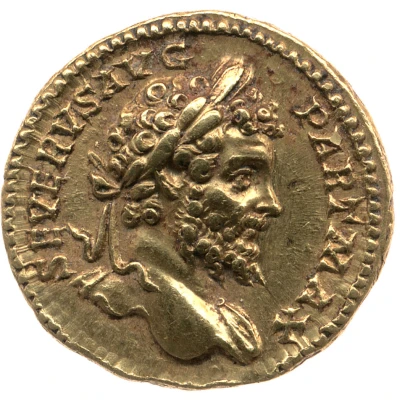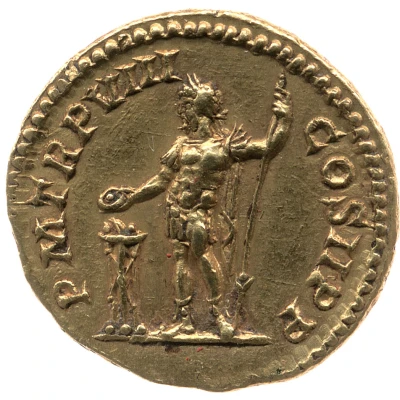Aureus - Caracalla VICTORIAE PARTHICAE; Victory
| Gold | - | - |
| Issuer | Rome › Roman Empire (27 BC - 395 AD) |
|---|---|
| Emperor | Caracalla (Marcus Aurelius Antoninus Caracalla) (198-217) |
| Type | Standard circulation coin |
| Years | 199-200 |
| Value | 1 Aureus = 25 Denarii |
| Currency | Denarius, Reform of Augustus (27 BC – AD 215) |
| Composition | Gold |
| Shape | Round (irregular) |
| Technique | Hammered |
| Demonetized | Yes |
| Updated | 2024-10-05 |
| Numista | N#273092 |
|---|---|
| Rarity index | 100% |
Reverse
Victory, winged, draped, advancing left, holding transverse trophy in both hands; to left, captive.
Script: Latin
Lettering: VICTORIAE PARTHICAE
Translation:
Victoriae Parthicae.
To the victory over Parthia.
Comment
Source:Online Coins of the Roman Empire (OCRE)
Interesting fact
The Aureus - Caracalla coin was minted during the reign of Emperor Caracalla, who ruled the Roman Empire from 198 to 217 AD. The coin's obverse side features an image of the emperor, while the reverse side depicts the goddess Victory holding a trophy and a palm branch. The coin was made of gold, which was a valuable and prestigious metal at the time, and it was used as a means of payment and a symbol of wealth and power. Interestingly, the Aureus - Caracalla coin was also used as a tool for propaganda, as it featured images and inscriptions that promoted the emperor's military victories and accomplishments. The coin's reverse side, for example, features the inscription "VICTORIAE PARTHICAE," which translates to "Victory over the Parthians," a reference to Caracalla's military campaigns against the Parthian Empire. Overall, the Aureus - Caracalla coin is a fascinating piece of history that provides insight into the political, economic, and cultural practices of the Roman Empire during the 2nd century AD.

